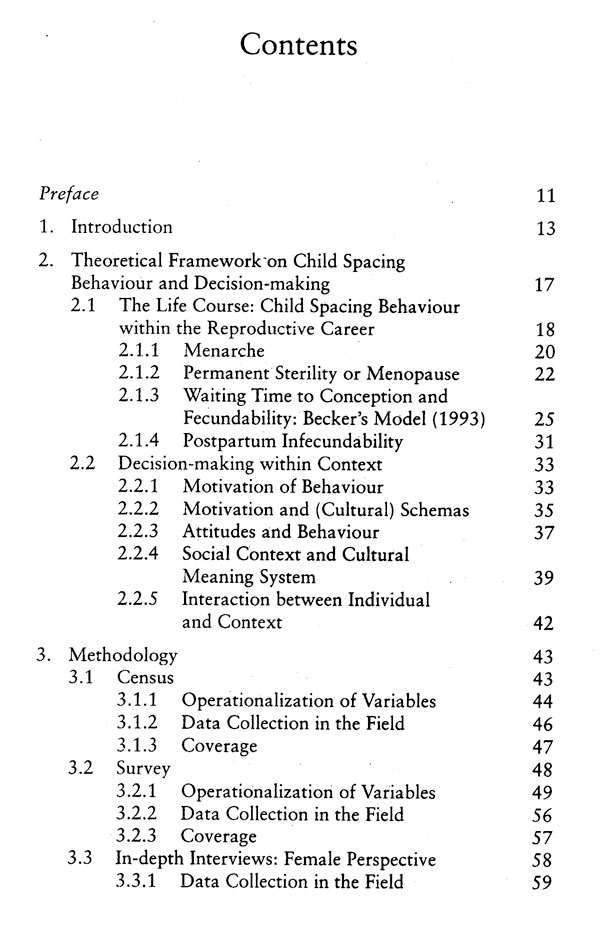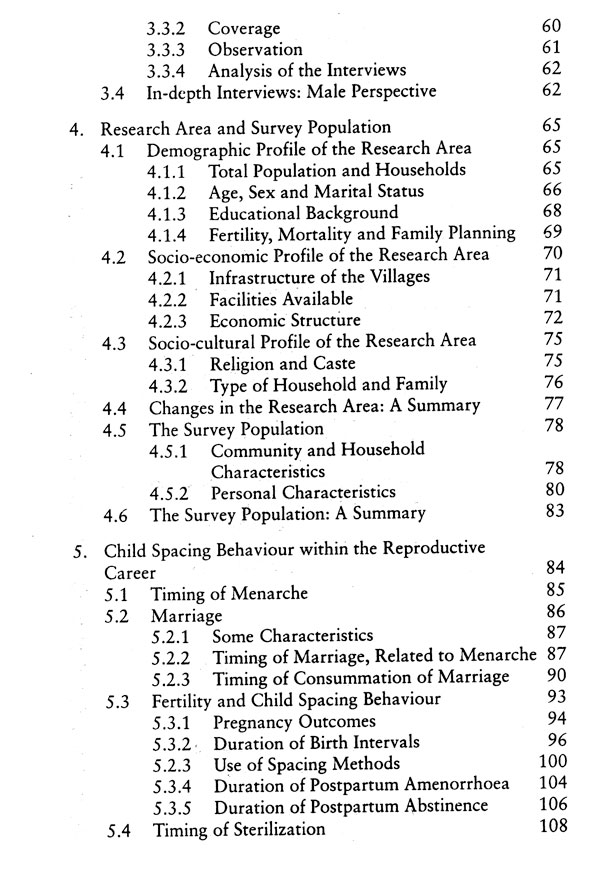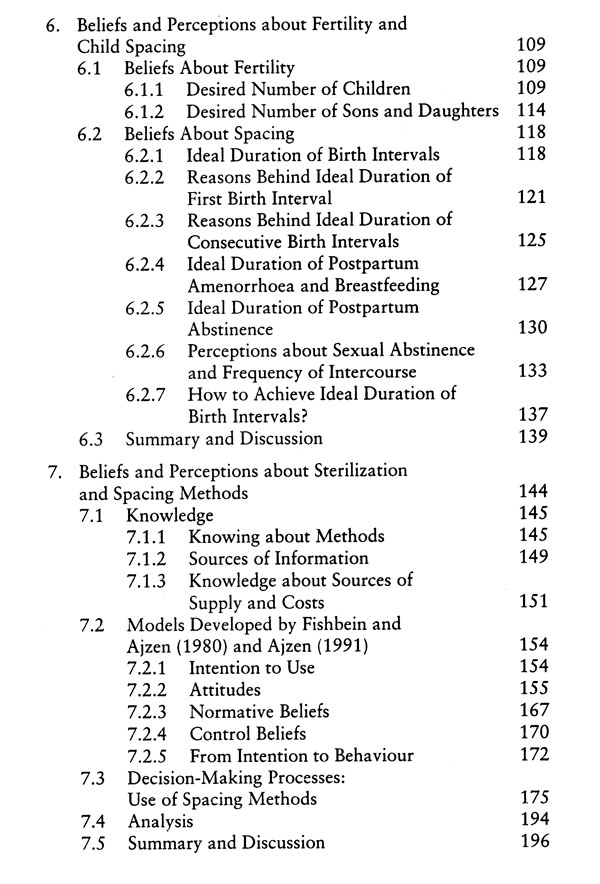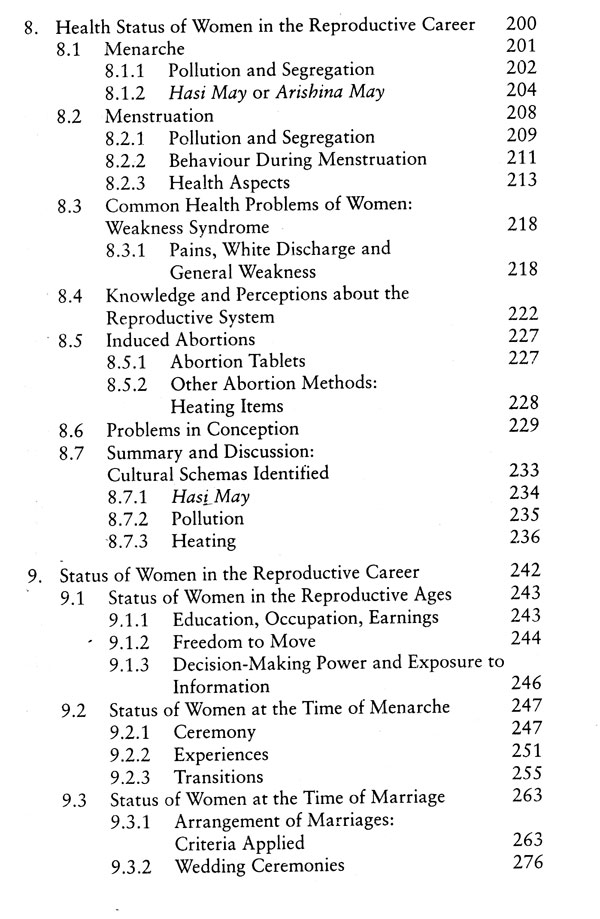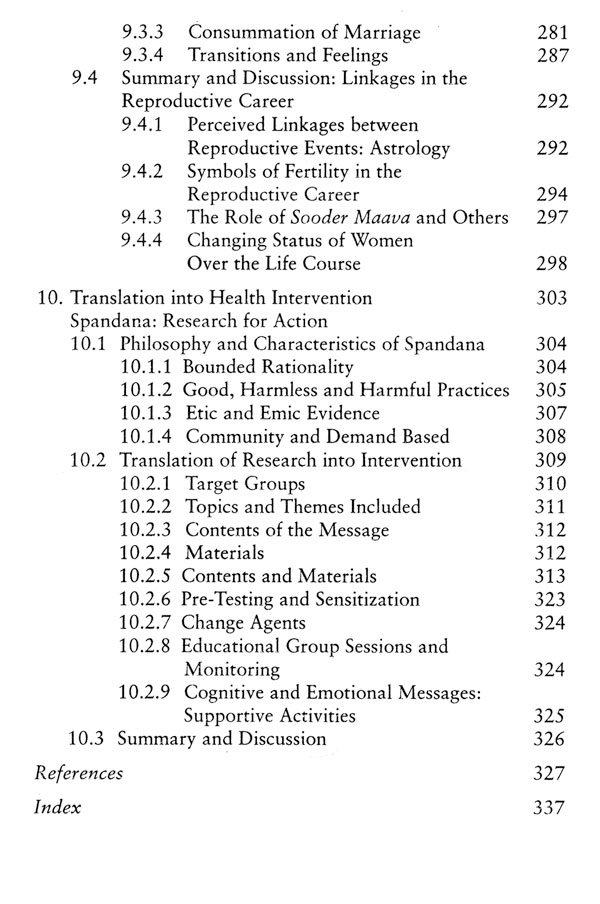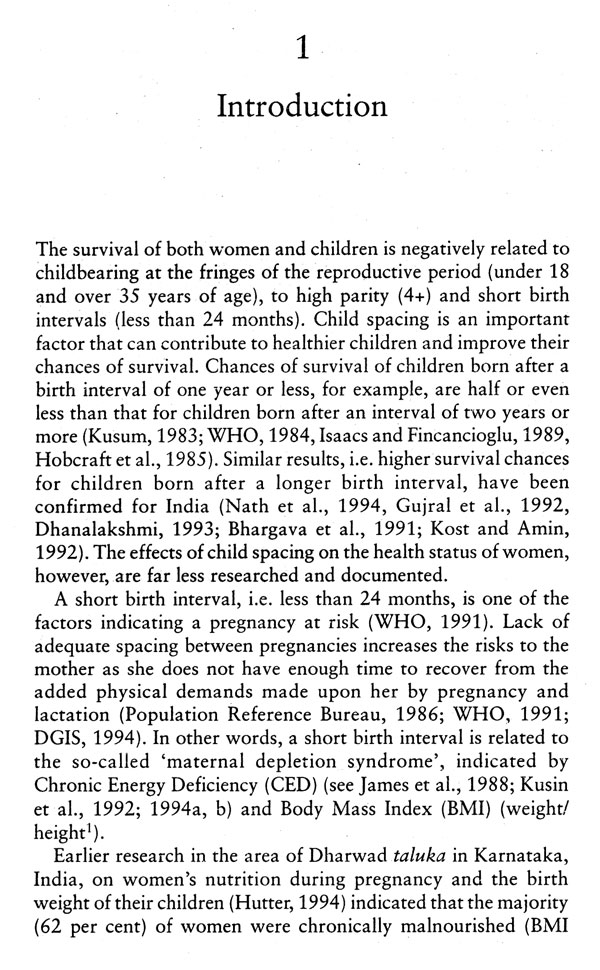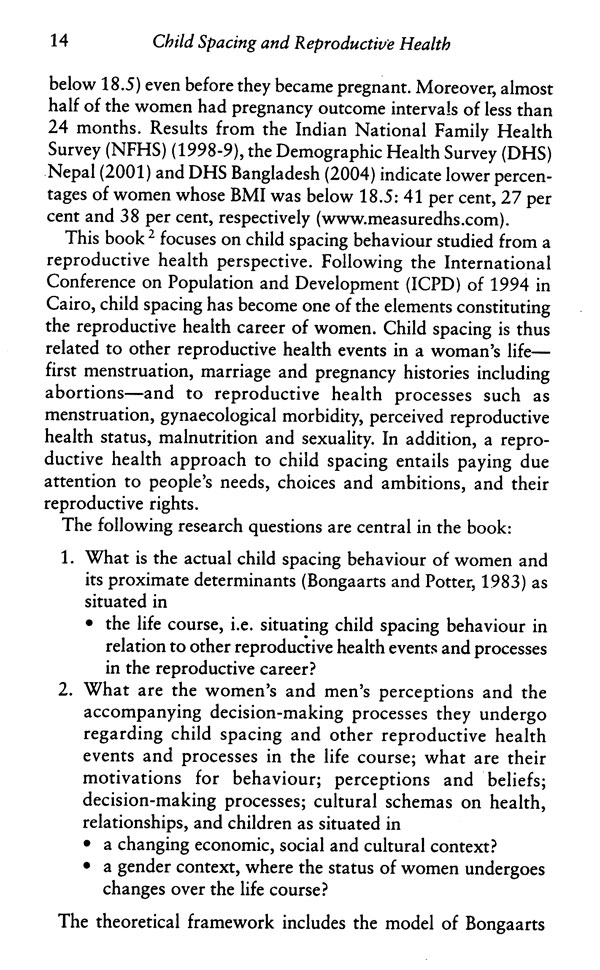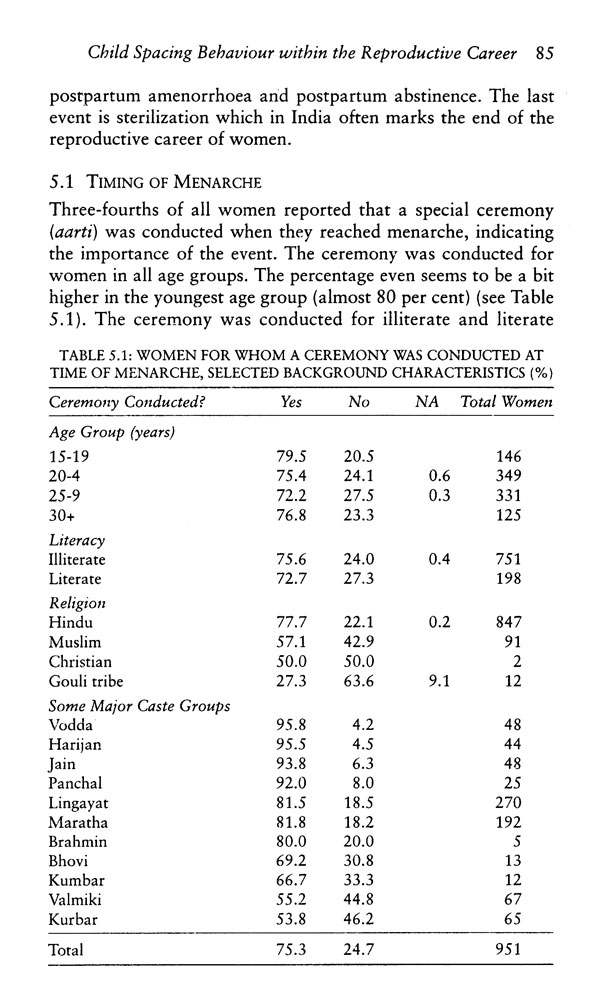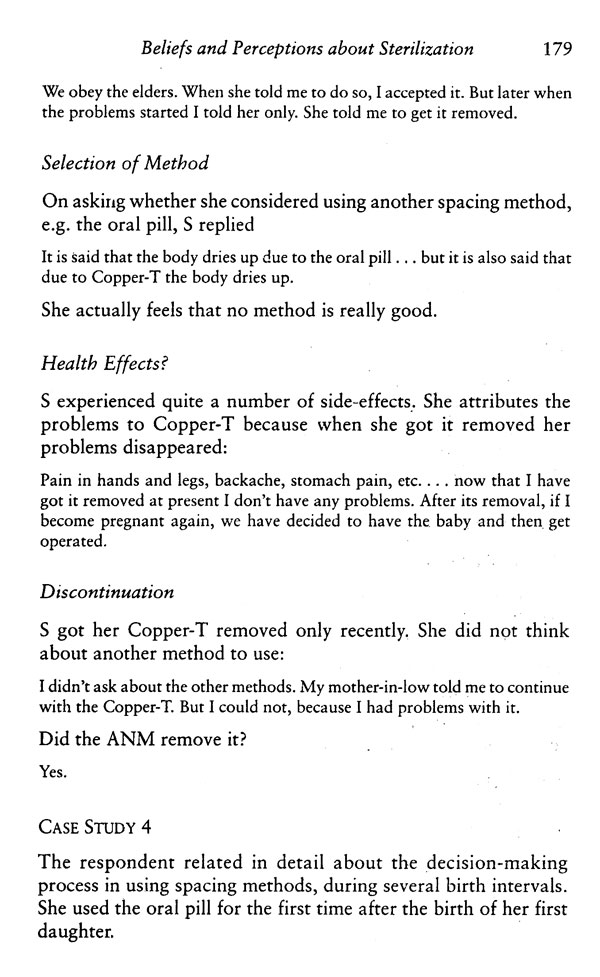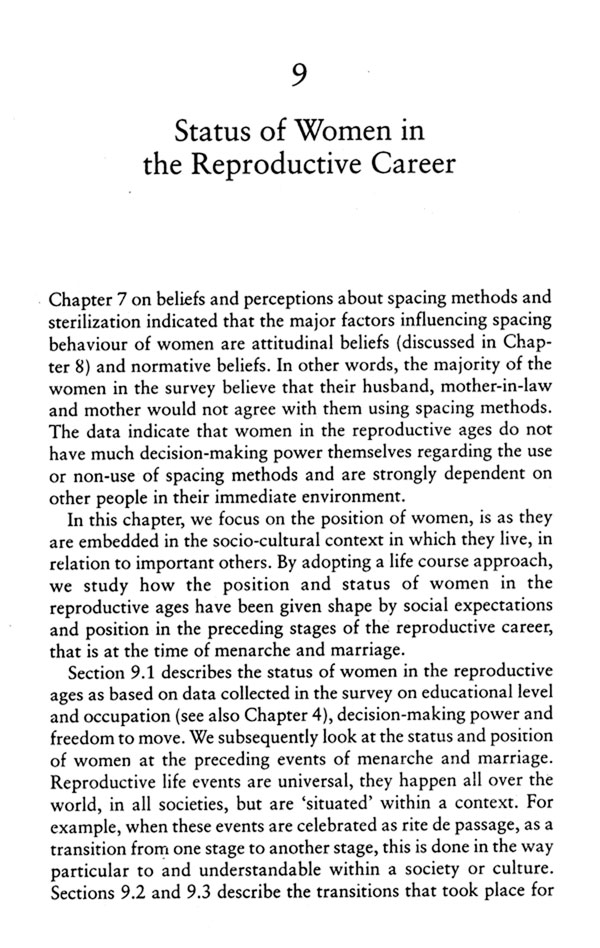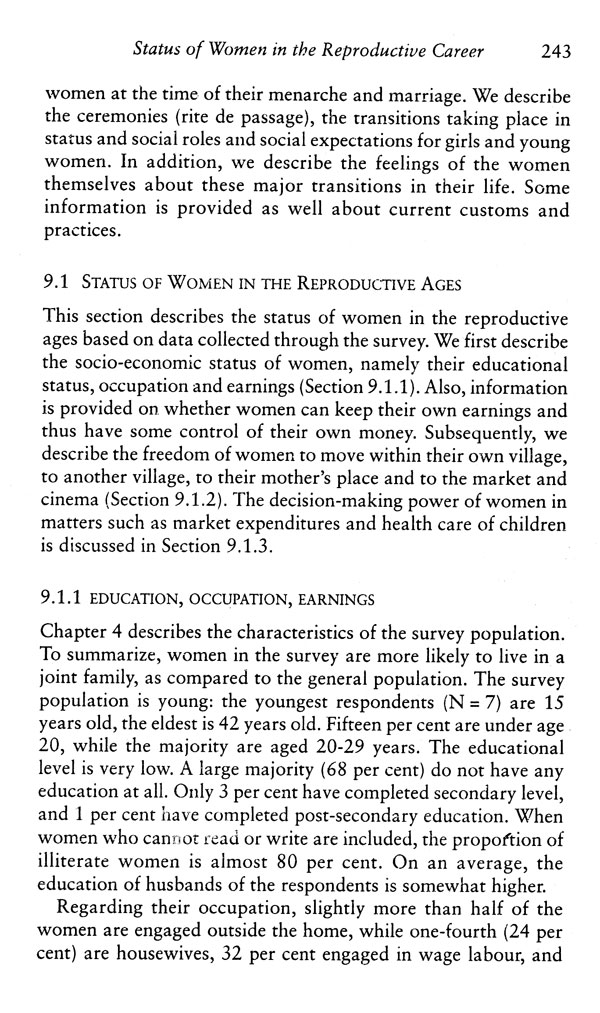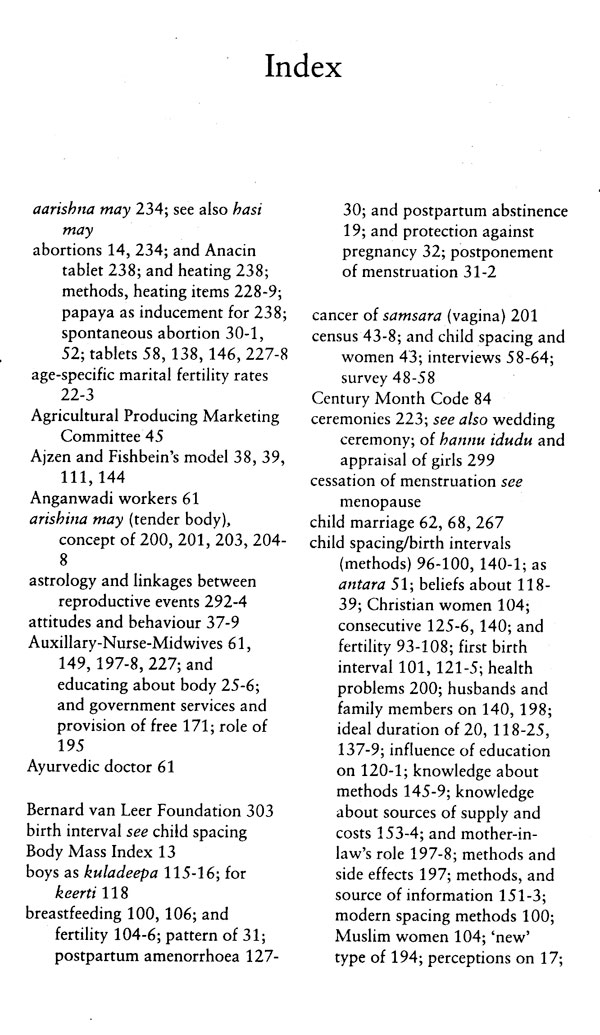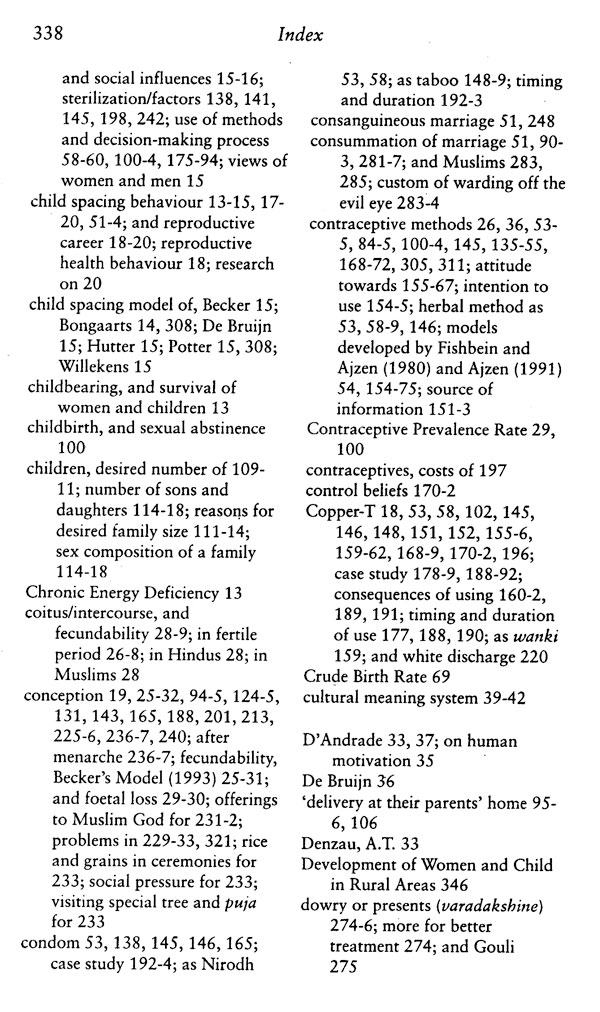
Child Spacing and Reproductive Health in Rural Karnataka, India (From Research to Action)
Book Specification
| Item Code: | NAZ784 |
| Author: | Inge Hutter, N.V. Rajeswari, J.S. Hallad and B.M. Ramesh |
| Publisher: | Manohar Publishers and Distributors |
| Language: | English |
| Edition: | 2006 |
| ISBN: | 9788173047145 |
| Pages: | 348 |
| Cover: | HARDCOVER |
| Other Details | 9.00 X 6.00 inch |
| Weight | 560 gm |
Book Description
While quite a lot is known about child spacing and survival chances of children, much less is known about child spacing and women's health.
The book describes child spacing behaviour of women in rural Karnataka, South India, as embedded in the economic and socio-cultural context in which women live. Adopting a life course perspective, child spacing is related to other events in the reproductive career (first menstruation, marriage) and reproductive health issues such as sexuality and contraceptive use. Women marry early, have their children and then often opt for sterilization. Modern spacing methods are hardly used: women think they have negative effects on their health status which is already low. Women indicate that the most important health problems for women in the villages are related to pregnancy and delivery, white discharge and general weakness.
Different cultural schemas can be identified, i.e. those of heating (ushna, kaavu) and cooling (tampu) and pollution and purity, motivating reproductive health behaviour such as during menstruation, the use of the oral pill, the treatment of white discharge. Since young married women are fully dependent upon their husband's family, the role of the mother-in-law becomes quite important. While men are thought by women to have an important influence on their reproductive health behaviour, men turn out to have hardly any knowledge about these reproductive health issues.
The research has provided evidence for the formulation of a health educational campaign, called Spandana, which is a collaboration of the researchers with FPAI Dharwad. The translation of research into action is also described in this very timely volume.’
This book presents and discusses the research project `Reproductive Health and Child Spacing in Rural Karnataka', conducted by the Population Research Centre, Faculty of Spatial Sciences of the University of Groningen, and the Population Research Centre, Institute of Economic Research in Dharwad, and it is based on earlier interim reports (Hutter 1998; Rajeswari and Hutter 1998; Hutter, Rajeswari, Hallad and Ramesh 1999; Hutter, Ramesh, Rajarama and Riiti 2002).
We are thankful to IDPAD (Indo-Dutch Programme on Alternatives in Development) in The Hague (Dr. Marc Verhagen; Dr. Cora Govers) and ICSSR (Indian Council of Social Science Research) in Delhi (Ms. Sanchita Dutta) for the funding of our research.
The research project was conducted in the period 1996-2000 in 11 villages of Dharwad taluka in Dharwad district of Karnataka. From the very beginning, the objective was to conduct academic research but also to ensure that research findings would be used to benefit the research subjects and improve the reproductive health status of women and men in the villages in Dharwad taluka. The research project thus was followed up with an evidence-based educational intervention called Spandana, a collaboration of the two research institutes with the Family Planning Association of India (FPAI), Dharwad branch. Spandana has been implemented in villages around Dharwad (in 2006 the programme reached more than 30 villages) during the period 2000-6.
Chapter 10 of this book, on research-for-action, is co-authored with S.V. Morab, S.V. Kulkarni and Sujata E Panigatti from FPAI, Dharwad/Spandana. This chapter concerns the first phase of Spandana (2000-2003).
We gratefully acknowledge IDPAD in The Hague / ICSSR in Delhi for their keen interest in the translation of our IDPAD research into action and the funding provided for part of this exercise. Marc Verhagen, then Coordinator of IDPAD, deserves special thanks, not only for the IDPAD funding but also for being instrumental in our contacts with the Bernard van Leer Foundation, which subsequently funded Spandana for six years. Special thanks go to Liana Gertsch and Jeannet van de Korput of the Bernard van Leer Foundation for their always stimulating, critical and reflective discussions on Spandana.
Book’s Content and Sample Pages